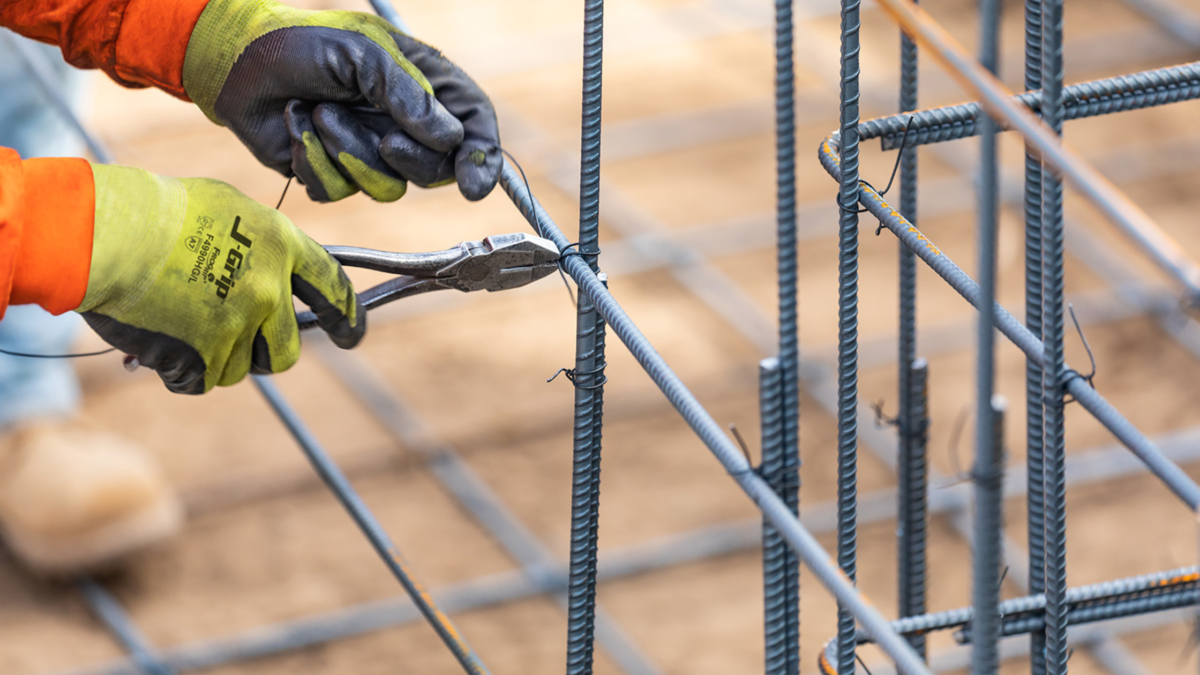Workplace safety is paramount, and equipping your team with the proper PPE is pivotal when preventing common hand injuries such as punctures. These hazards can range from thick wood splinters to fine single-wire strands.
According to the Occupational Health & Safety (OH&S), 7% of acute hand injuries are attributed to punctures. Additionally, the Occupational Safety & Health Administration (OSHA) estimates that punctures incur an average cost of $47,703 per year per incident. Read on to learn more about puncture-resistant work gloves and ensure the safety of your workforce on the job.
What are Puncture Resistant Work Gloves?
Puncture-resistant work gloves are personalized protective equipment (PPE) designed to safeguard against puncture hazards in diverse workplaces. These gloves are constructed with materials that resist penetration from sharp objects, such as nails, shards of glass, metal, and other pointed items.
These gloves are commonly used in construction, manufacturing, automotive, metalworking, and more. It’s important to note that puncture-resistant gloves are distinct from cut-resistant gloves, which are designed to protect against sharp edges and blades rather than puncture threats.
Understanding Puncture Wounds:
A puncture wound is an injury caused by sharp, pointed objects that penetrate the skin and underlying tissues. Unlike cuts or scrapes, puncture wounds are characterized by their deeper and narrower nature. Many cuts and lacerations originate from punctures, underscoring the need to select the correct glove based on the hazards the job presents.
Navigating Industry Standards: Puncture and Needlestick Protection
Manufacturers typically focus on two primary puncture hazards: blunt punctures and needlestick punctures. Both the American National Standards Institute (ANSI) and the European Standard (EN 388) utilize a similar testing methodology to assess puncture resistance, specifically concerning blunt punctures.
The testing method targets potential puncture threats from larger objects such as nails and staples by using a standardized 4.5mm diameter steel probe featuring a rounded point, moving at a 100mm/min fixed speed. The testing machine records the maximum force exerted on the probe to penetrate the material fully. This test is repeated 12 times on the material to obtain an average measurement. Results are expressed in Newtons and converted into a 1-4 scale for EN388 and a 1-5 scale for ANSI/ISEA 105.
The following chart outlines these puncture resistance levels:
| Level | ANSI/ISEA 105-2016 | EN 388:2016 |
| 1 | 10-19 N | 20-59 N |
| 2 | 20-59 N | 60-99 N |
| 3 | 60-99 N | 100-149 N |
| 4 | 100-149 N | 150+ N |
| 5 | 150+ N | – |
It’s crucial to note that not all puncture threats come in the same shapes or sizes. A common misconception in the workplace is assuming that a glove with a high puncture level is also rated for needle resistance. To address this, the ASTMF2878-10 standard introduced by ANSI specifically tests for needlestick punctures.
This testing method employs a 25-gauge steel needle moving at a 500 mm/min speed. The testing machine records the maximum force required to penetrate the material, with results given in Newtons and then converted into a 0-5 scale, as illustrated in the chart below:
| Level | ASTM F2878-10 |
| 0 | < 2 N |
| 1 | ≥ 2 N |
| 2 | ≥ 4 N |
| 3 | ≥ 6 N |
| 4 | ≥ 8 N |
| 5 | ≥ 10 N |
Exploring the Different Puncture-Resistant Glove Materials
Not all puncture-resistant gloves are created equal. These gloves can come in various materials depending on your specific needs. Here are some of these materials and their respective benefits and disadvantages.
- Leather
- Leather is a commonly used material in glove manufacturing and is known for its effectiveness in blunt puncture resistance. However, it provides limited defense against needlestick punctures.
- Nitrile
- Disposable nitrile gloves, widely used in medical, dental, and food preparation settings, offer excellent resistance to punctures and abrasions. They are particularly effective for one-time use hand protection.
- Metal Mesh
- Gloves made from metal mesh are effective against both needlestick and blunt punctures. However, they face challenges such as degradation over time, resulting in decreased protection. Additionally, they may not be the most comfortable to wear.
- Woven Kevlar®
- A popular choice in various industries, woven Kevlar® stands out for its excellent puncture and cut resistance. Different weave patterns provide varying levels of protection.
- Epoxy Plates
- Epoxy plates offer high cut and puncture protection levels, creating a multi-layered defense against needlestick and blunt punctures.
Choosing the Right Puncture-Resistant Glove:
Many options are available for puncture-resistant materials. However, it’s important to note that no single material or glove can guarantee protection against all puncture-related hazards. Selecting the right puncture-resistant glove involves considering the task at hand and the potential hazards of the job.
The charts above serve as a general guide to help you make this determination. For personalized guidance and support, reach out to a Liberty Safety representative to get connected to one of our product experts and help ensure workforce safety.
March Product Promo:
Gear up for a safe March with our monthly product promo showcasing items designed to protect your workforce from puncture-related hazards. Explore the features that set these gloves apart.
Your Safety is our priority. It’s all part of our Freedom in Full Gear Promise!

